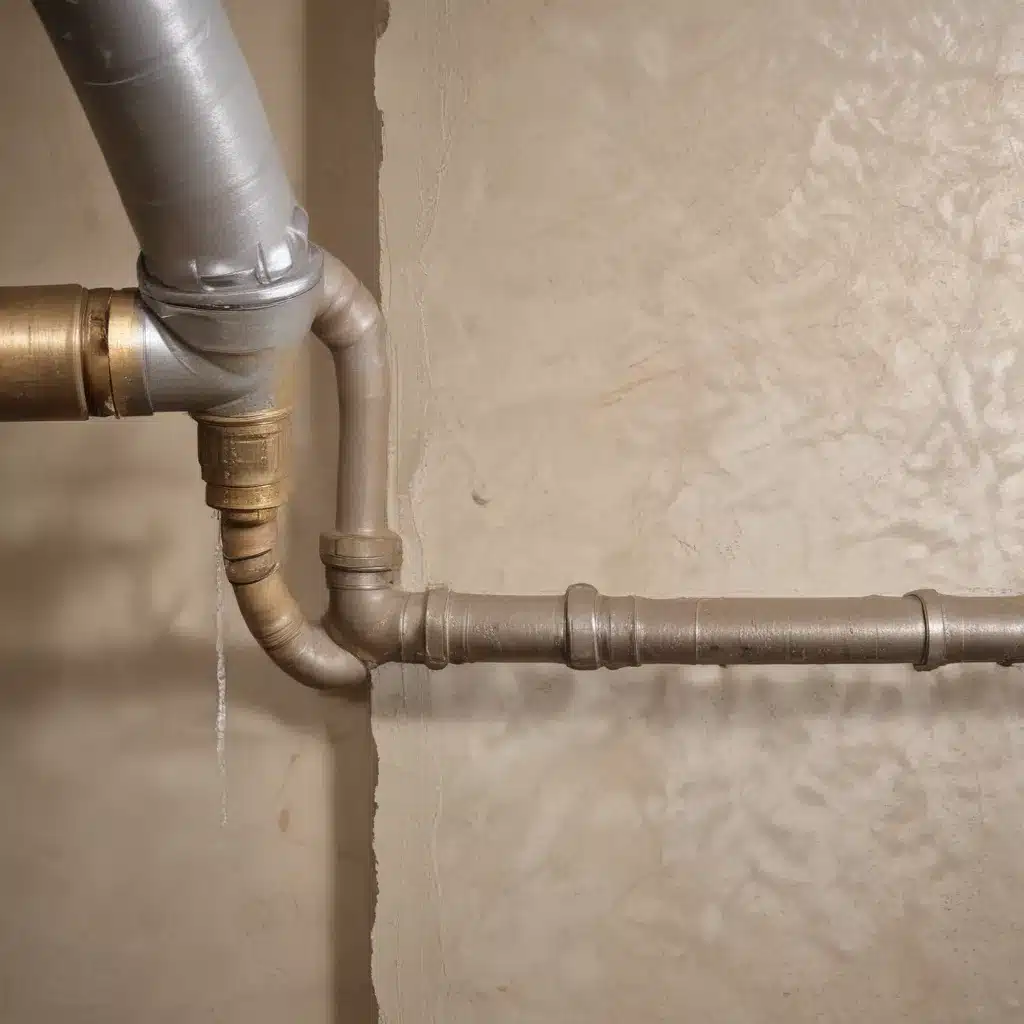
As an experienced plumbing consultant serving the North Wales region, I’ve seen firsthand the devastating impact that burst pipes can have on residential, commercial, and industrial properties. In our 15 years installing… Burst pipes not only disrupt water supply and cause significant water damage, but they can also lead to costly repairs and long-term structural issues if left unaddressed. That’s why it’s crucial for property owners and facilities managers to prioritize innovative insulation strategies to safeguard their plumbing systems against the perils of freezing temperatures.
Now, this might seem counterintuitive…
Water Pressure Management
One of the key factors contributing to burst pipes is excessive water pressure. When water freezes in a pipe, the resulting expansion can create immense pressure that the pipe material simply cannot withstand, leading to cracks and bursts. To mitigate this risk, it’s essential to implement effective water pressure management techniques.
Pressure Regulation Techniques: Installing pressure-reducing valves (PRVs) at strategic points in the plumbing system can help maintain optimal water pressure levels, typically between 40-60 psi. These valves automatically adjust the pressure to prevent spikes that could compromise pipe integrity.
Pressure Monitoring Systems: Incorporating pressure monitoring technologies, such as digital gauges or smart sensors, allows you to closely track water pressure throughout the system. This real-time data enables proactive adjustments and alerts users to any concerning fluctuations.
Pressure Relief Valve Installation: Equipping the plumbing system with pressure relief valves provides an additional safeguard against excessive pressure buildup. These valves automatically release pressure when it reaches a predetermined threshold, preventing the pipes from bursting.
Pipe Insulation Strategies
Proper insulation is a fundamental component of any burst pipe prevention strategy. By creating a barrier between the pipes and the surrounding environment, insulation helps maintain a consistent temperature and mitigate the risk of freezing.
Thermal Insulation Materials: When selecting insulation, opt for high-performance materials like closed-cell foam, fiberglass, or mineral wool. These options offer superior thermal resistance and can be customized to fit various pipe diameters and configurations.
Pipe Wrap Insulation: Pipe wrap insulation, a popular choice for both exterior and interior applications, provides a simple yet effective solution. These pre-formed sleeves or sheets can be easily installed around the pipes, creating a protective layer against cold air infiltration.
Spray Foam Insulation: For hard-to-reach areas or complex piping layouts, spray foam insulation can be an excellent choice. This versatile material can be applied directly to the pipes, sealing gaps and creating a seamless, continuous barrier against the elements.
Pipe Sizing and Drainage
Proper pipe sizing and efficient drainage design play a crucial role in preventing burst pipes. Selecting the appropriate pipe diameter and ensuring adequate drainage can significantly reduce the risk of water accumulation and subsequent freezing.
Optimal Pipe Diameter Selection: Carefully choosing the right pipe size based on anticipated water flow and pressure requirements is essential. Oversized pipes can lead to stagnant water, while undersized pipes may not adequately accommodate peak demands, increasing the likelihood of freezing.
Drainage Layout Design: Meticulously planning the drainage system layout, including the slope and grading of pipes, ensures that water can easily flow away from the building. This prevents water from pooling in low-lying areas, where it is more susceptible to freezing.
Regulatory and Safety Compliance
Navigating the complex web of building codes and regulatory requirements is a vital aspect of safeguarding against burst pipes. Ensuring compliance with these standards not only protects your property but also safeguards the health and safety of its occupants.
Building Code Requirements: Stay up-to-date with the latest insulation R-value standards, freeze protection regulations, and drainage system guidelines specified in the UK’s building codes. Adherence to these rules ensures your plumbing system meets the necessary criteria for robust performance and longevity.
Inspection and Maintenance: Regular inspections and preventive maintenance are essential for identifying potential vulnerabilities and addressing them before they escalate into costly problems. Implement a proactive schedule for pipe inspections, insulation integrity checks, and other preventive measures to keep your system in optimal condition.
Advanced Insulation Technologies
As the industry continues to evolve, innovative insulation technologies are emerging that offer enhanced thermal performance and energy efficiency. Exploring these advanced solutions can provide an added layer of protection against burst pipes.
Vacuum Insulated Pipes: Also known as VIP pipes, these state-of-the-art systems utilize a vacuum-sealed design to achieve exceptional thermal resistance. The absence of air in the insulation layer minimizes heat transfer, making VIP pipes highly effective in maintaining stable temperatures even in extreme conditions.
Self-Regulating Heat Tracing: This intelligent insulation technology incorporates heating elements that automatically adjust their output based on the surrounding temperature. As the ambient temperature drops, the heat tracing system increases its output to prevent the pipes from freezing, providing a reliable and energy-efficient solution.
Specialized Applications
While the strategies discussed thus far cater to a wide range of residential, commercial, and industrial settings, certain applications may require specialized insulation approaches to address unique challenges.
Outdoor Pipe Protection: For pipes running along the exterior of buildings or buried underground, specialized insulation solutions are necessary. These may include buried pipe insulation, above-ground pipe enclosures, and considerations for cold climate environments.
Industrial and Commercial Facilities: In high-demand or complex facilities, such as manufacturing plants, hospitals, or large commercial buildings, the insulation requirements may be more stringent. These applications may necessitate process piping insulation, cryogenic fluid containment, or high-temperature insulation to safeguard against the specific challenges posed by the operating environment.
By embracing these innovative insulation strategies, property owners and facilities managers in North Wales can significantly reduce the risk of burst pipes and the associated water damage, structural issues, and costly repairs. Investing in a comprehensive approach to plumbing protection not only safeguards your property but also ensures the long-term reliability and efficiency of your building’s water supply and drainage systems. For more information or to discuss tailored solutions for your project, please visit Plumbing Drains North Wales.Tip: Always verify water pressure ratings with a certified plumber

